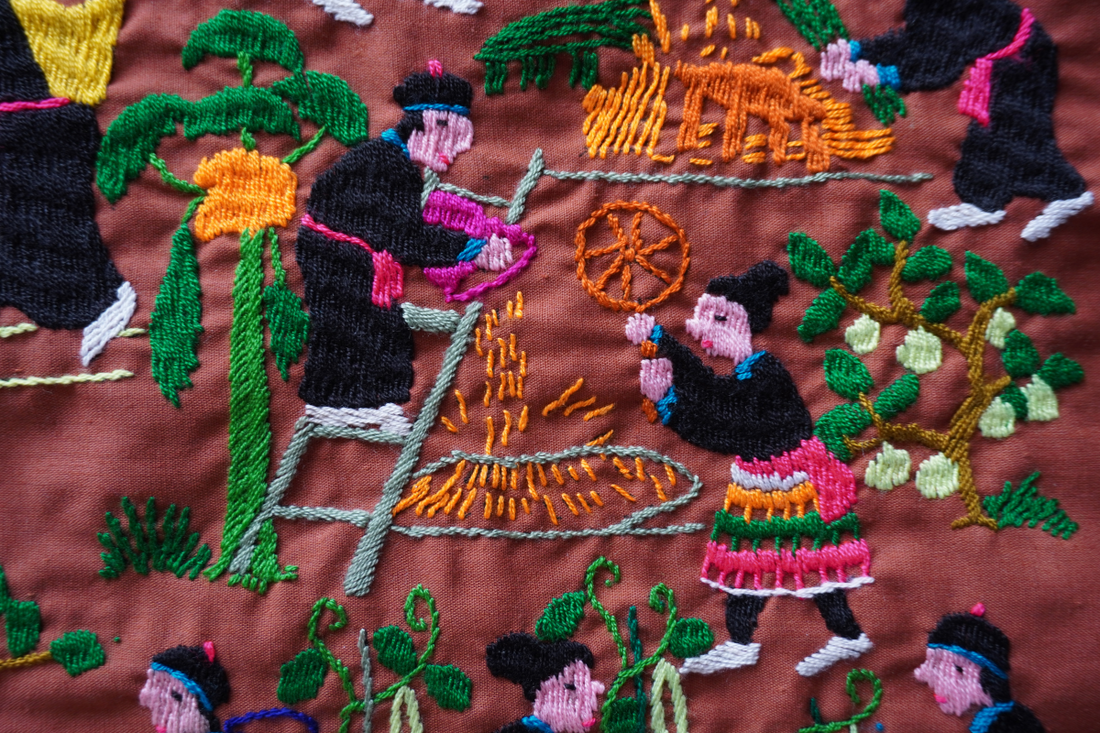
Paj Ntaub: The Secret Language of Hmong Embroidery
Share
What I Discovered in a Piece of Cloth
It all started with some embroidered fabric I bought at a night market in Laos, colorful, detailed, and handmade. At the time, they were just souvenirs. I didn’t know who had made them or what they meant.
Later, back home, I came across a book at the library that changed how I saw them. I realized those threads weren’t just for decoration, they told stories. Stories of war, memory, identity, and survival.
I thought back to that night market, so full of life, with local women selling handmade crafts like paintings, jewelry, and beautiful embroidered cloth. I didn’t understand their meaning then, but something about them caught my eye. The colors, the patterns, the care in each stitch. I bought a few, thinking maybe I’d use them for a creative project someday. I had no idea they carried so much history.

Paj Ntaub as Story and Survival
Hmong embroidery, or paj ntaub, is more than just a decorative art, it's a form of visual storytelling and a vessel of cultural identity. According to Hmong oral history, ancient scripts once hidden in embroidery motifs were sewn into traditional clothing, especially the pleated skirts of Green Hmong women. Though the original meanings of these symbols have been lost over time, their visual legacy continues in vibrant patterns still stitched today.

Traditionally, Hmong girls learned embroidery from their mothers and grandmothers at a young age. The skill wasn’t only a creative outlet, it was also a symbol of virtue, discipline, and readiness for marriage. During the Hmong New Year, girls would wear clothes they had sewn themselves to participate in public celebrations and courtship rituals. Later, embroidery became part of major life events: skirts were passed from mother to daughter as dowry, and hand-sewn funeral garments ensured spiritual protection in the afterlife. Historically, Hmong garments were made from hemp and dyed in deep blues or blacks. They were adorned with intricate batik, appliqué, and hand embroidery, each motif carefully chosen.

Unknown artist, 1980
Over time, these practices evolved. The experiences of refugee life, global displacement, and exposure to other cultures (like the Amish in the U.S.) led Hmong women to adapt their traditional skills into new forms. One of the most notable was the emergence of story cloths: embroidered panels that depicted village life, memories of war, and scenes of migration. These story cloths became both economic lifelines and cultural testaments, especially in refugee camps and diaspora communities. What began as ceremonial or familial work grew into sellable art, carried across borders and generations.
Today, paj ntaub has evolved into modern crafts and commercial art. Though machine-made versions are common, each thread still holds a story, of resilience, memory, and identity.
 Memory from Loas.
Memory from Loas.
